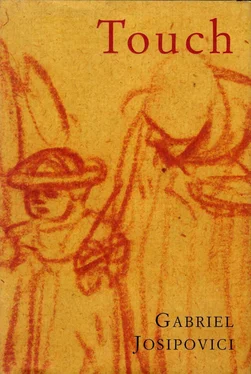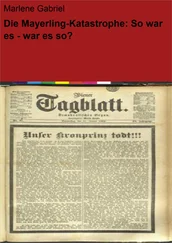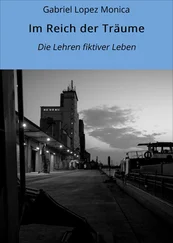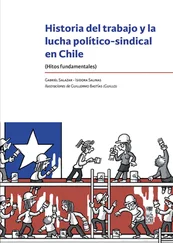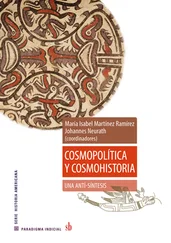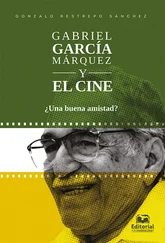Gabriel Josipovici - Touch
Здесь есть возможность читать онлайн «Gabriel Josipovici - Touch» весь текст электронной книги совершенно бесплатно (целиком полную версию без сокращений). В некоторых случаях можно слушать аудио, скачать через торрент в формате fb2 и присутствует краткое содержание. Год выпуска: 1996, ISBN: 1996, Издательство: Yale University Press, Жанр: Современная проза, на английском языке. Описание произведения, (предисловие) а так же отзывы посетителей доступны на портале библиотеки ЛибКат.
- Название:Touch
- Автор:
- Издательство:Yale University Press
- Жанр:
- Год:1996
- ISBN:0300066902
- Рейтинг книги:5 / 5. Голосов: 1
-
Избранное:Добавить в избранное
- Отзывы:
-
Ваша оценка:
- 100
- 1
- 2
- 3
- 4
- 5
Touch: краткое содержание, описание и аннотация
Предлагаем к чтению аннотацию, описание, краткое содержание или предисловие (зависит от того, что написал сам автор книги «Touch»). Если вы не нашли необходимую информацию о книге — напишите в комментариях, мы постараемся отыскать её.
Touch — читать онлайн бесплатно полную книгу (весь текст) целиком
Ниже представлен текст книги, разбитый по страницам. Система сохранения места последней прочитанной страницы, позволяет с удобством читать онлайн бесплатно книгу «Touch», без необходимости каждый раз заново искать на чём Вы остановились. Поставьте закладку, и сможете в любой момент перейти на страницу, на которой закончили чтение.
Интервал:
Закладка:
Few of us any longer go on pilgrimages but we still respond to works of art, though the old debates about spirit and letter still bedevil aesthetics, even though the terms have changed. It is clear that the work of art, whether it be a painting or a poem, if it is actively engaged with, forces the viewer or reader to undergo a journey no less open to the pitfalls awaiting the unwary or the easily tempted than the real journey. For it too is, in the end, subject to no control once the process of viewing or reading has begun. And Chaucer for one was well aware of this. The Canterbury Tales is not a substitute for but an analogy to pilgrimage. Chaucer's Parson, like Thorpe the Lollard, may wish to ‘knit up all this mateere’ at the end by delivering a sermon which will put the other tales in their place once and for all, but he cannot succeed. His sermon may come at the physical end of The Canterbury Tales , but he cannot close the Tales off. The reader has been made to feel, long before we get to the Parson's Tale, that there is no end, that the words of the Pardoner are no less (and of course no more) authoritative than those of the Parson, those of the Miller as worthy of our attention (though not more so) as those of the Knight. Going on a pilgrimage, for Chaucer, means having to encounter the Miller and the Pardoner, the Shipman and the Summoner, as well as the Knight, the Man of Law and the Parson. It means having to make up our own minds about the tales of the Merchant and the Nun's Priest, and that means being able to change our minds, it means having to respond to all the contradictions inherent in the Prioress and her anti-Semitic tale and in the Wife of Bath and her poignant and confused confessions. Indeed, the ‘therapy of distance’ in The Canterbury Tales begins to work for us as soon as we start to read the work, and it is not radically altered by the arrival of the pilgrims within sight of Canterbury and the shrine of the ‘hooly blessed martir’ they have come to seek. With this book, as with pilgrimage itself, we can touch the mystery but never make it wholly our own.
The Reformation brought about the effective end of pilgrimage in northern Europe, as it did of the processions through the streets of the great cities on the feast-days of the Church and during the presentation of the Corpus Christi cycles which had, since the fourteenth century, celebrated communally and out in the open the common history of all Christians. The corporation records at York apprise us of the decision in May 1561 that ‘for as moche as the late fest of Corpus Christi is not nowe celebrated and kept Holy day as was accustomed it is therefore agreed that on Corpus Christi even my lord Mayor and aldermen shall in makyng the proclamation accustomed goe about in semely sadd apparell and not in skartlet’, a provision, says Eamon Duffy, who quotes the passage, which was repeated in many other towns. ‘By the end of the century in most communities the plays were no more than a memory,’ he writes,
and, though the young Shakespeare may have witnessed one of the last performances of the Coventry Corpus Christi cycle, which survived into the mid-1570s, only the older members of the audience of Hamlet would have known at first hand what ‘out-Heroding Herod’ actually involved. Two centuries of religious drama, and a whole chapter in lay appropriation of traditional religious teaching and devotion, were at an end.
Instead of taking part in public events Christians were now urged to meditate inwardly on Christ's Passion (while, to satisfy their curiosity they could read accounts in cheap pamphlets of the recent voyages of discovery and of the mores of the criminal classes). In such a climate it was only in the realm of art that the ‘therapy of distance’ was kept alive — in the plays of Shakespeare himself of course and his fellow-dramatists, but also in the quieter realm of lyric poetry.
It has often been remarked how powerful was the influence of St Ignatius' meditational exercises on Donne and his followers. These exercises were in fact elaborations and codifications of precisely that ‘inner pilgrimage’ which the Devotio Moderna had encouraged in the fifteenth century. That they were among the most powerful instruments of the post-Tridentine Catholic Church should come as no surprise, since one of the key facts about the religious controversies of the fifteenth and sixteenth centuries is that the two sides held many assumptions in common and that both had, in effect, lost touch with the attitudes that had held sway in Europe from late antiquity to the fifteenth century.
But while there is no doubt that Donne, the one-time Catholic and descendant of the greatest English martyr since Becket, Thomas More, was profoundly influenced by Ignatian meditational procedures, his poems can never be reduced to these. And he knows this, deplores it, and at the same time relishes it. In the great poem he wrote when he was gravely ill he plays and puns on his own name with a mixture of horror and delight that is itself an index of the irreducibility of poetry and of the acceptance of its provisional, uncontrollable nature:
Wilt thou forgive that sin where I begun,
Which was my sin, though it were done before?
Wilt thou forgive that sin, through which I run,
And do run still: though still I do deplore?
When thou has done, thou has not done,
For, I have more.
Wilt thou forgive that sin which I have won
Others to sin? and, made my sin their door?
Wilt thou forgive that sin which I did shun
A year, or two: but wallowed in, a score?
When thou hast done, thou hast not done,
For, I have more.
I have a sin of fear, that when I have spun
My last thread, I shall perish on the shore;
But swear by thy self, that at my death thy son
Shall shine as he shines now, and heretofore;
And, having done that, thou hast done,
I fear no more.
The ringing conclusion suggests triumphant closure, but that is only part of the truth. For, syntactically, the last sentence, which is in effect the last stanza, remains completely open. I fear, Donne says, that in the end I will not be saved; so swear, he implores God, that this will not be so, that you will, through your Son, save me; having sworn this, he concludes, you have done all I could ask of you and my fears will vanish. But the lines leave it open as to whether God has indeed acceded to Donne's request before the start of the last two lines or whether that remains only the fervent desire of the sick poet, who will never, till the actual moment comes, know whether or not his desire will be fulfilled. As so often with Donne it is not the clever paradoxes that make the poem but the profound ambiguities at its heart.
Distance is here both therapy and anguish, and however often we read the poem we will never be able to say which triumphs. There is always more. One is never done. Nor is Donne, ever, fully, Donne or done. To that extent Kierkegaard and Derrida are right, and those, from the Lollards to the structuralists, who would seek to eliminate that supplement, are wrong. It was the genius of the early Church and, no doubt, of other religious traditions, to ritualise this in the experience of pilgrimage to the sites of burial of the saints and holy martyrs. When, for historical reasons, pilgrimage came to an end in western Europe, it was left to artists to take up the torch.
13 Relics
‘A hectic trade in, accompanied by frequent thefts of, relics, is among the most dramatic, not to say picaresque aspects of Western Christendom in the Middle Ages’, writes Peter Brown. The reason for this was that it was easier to move bits of the bodies and clothing of holy men than to get large numbers of people to go to them: ‘Translations — the movements of relics to people — and not pilgrimages — the movement of people to relics — hold the centre of the stage in late-antique and early medieval piety.’ But again Brown is concerned lest we accept too readily the dismissive attitude to relics of the Reformation polemicists, and anxious to bring back to our awareness the subtle and complex role which relics played in the life of the people of Europe for close on fifteen centuries.
Читать дальшеИнтервал:
Закладка:
Похожие книги на «Touch»
Представляем Вашему вниманию похожие книги на «Touch» списком для выбора. Мы отобрали схожую по названию и смыслу литературу в надежде предоставить читателям больше вариантов отыскать новые, интересные, ещё непрочитанные произведения.
Обсуждение, отзывы о книге «Touch» и просто собственные мнения читателей. Оставьте ваши комментарии, напишите, что Вы думаете о произведении, его смысле или главных героях. Укажите что конкретно понравилось, а что нет, и почему Вы так считаете.
